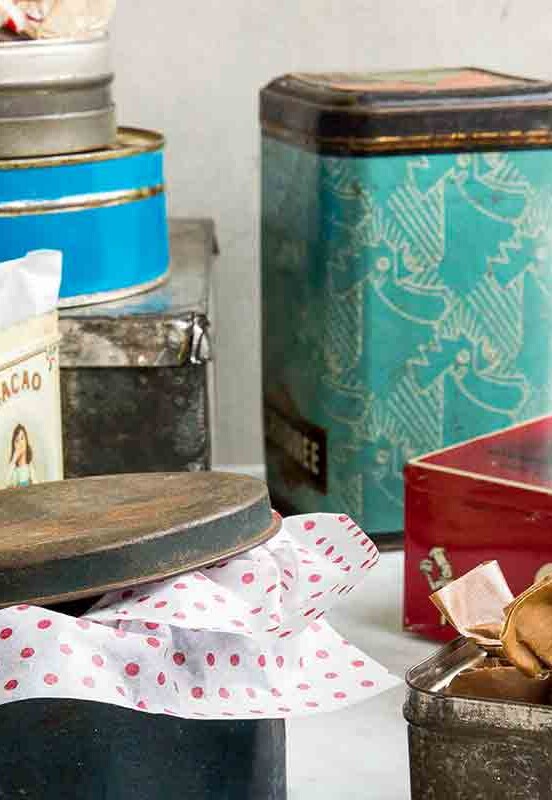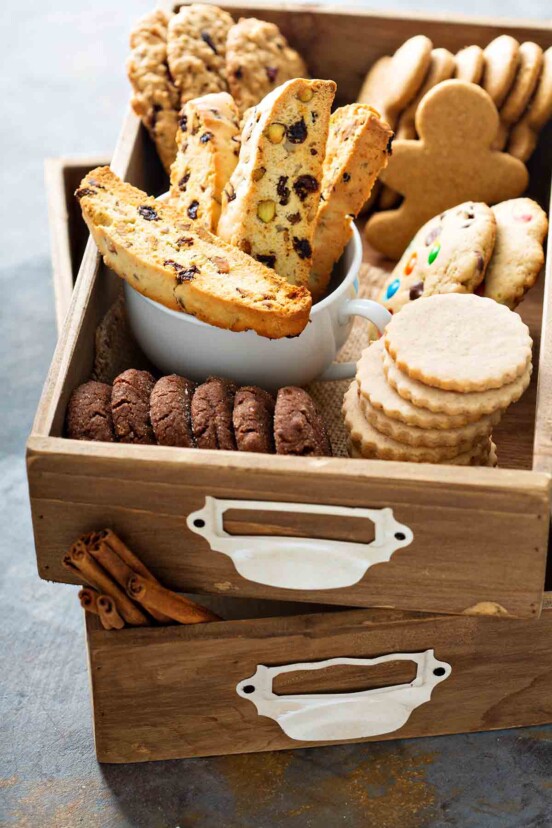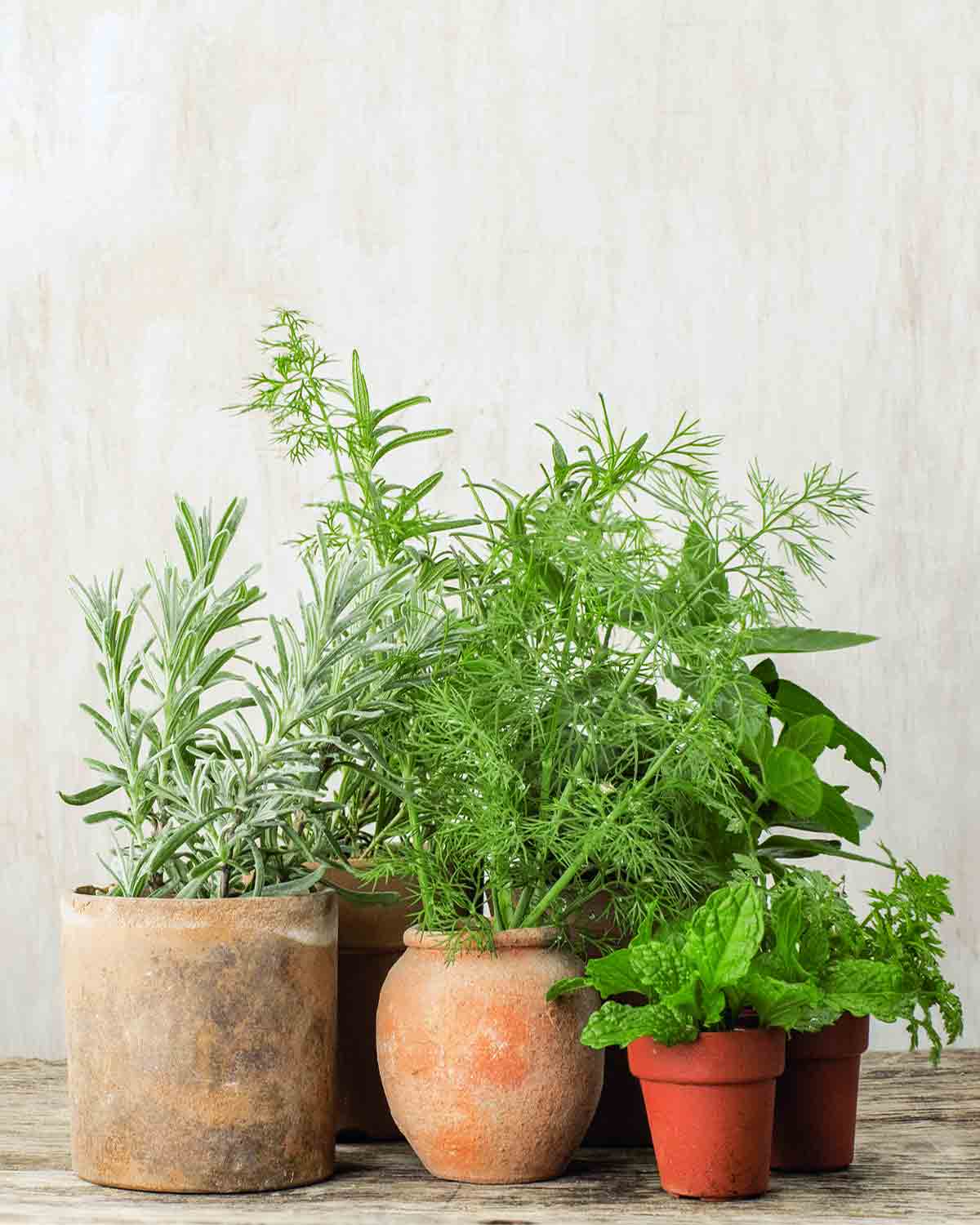
A kitchen garden is what we’re obsessing about right now. A little patch of potted plants so you have herbs at hand all summer long. Here’s a primer on how to grow herbs in containers so they grow like, er, weeds.
You don’t need to be short on space to realize how perfectly suited herbs are to growing in containers. Why spend all summer forking over green for tiny handfuls of cilantro, oregano, or parsley when you can grow piles (and piles) of your own? It’s time to be the master of your own herbaceous destiny. It’s not that hard, we promise. If you have a sunny spot that can fit a few pots, you’re on your way to a bounty of herbs to flavor your food indefinitely.
A container garden needs a few things, and it doesn’t end with just containers and herbs. Fortunately, the list isn’t too much longer. Here’s a primer on how to start a container garden and keep it going.
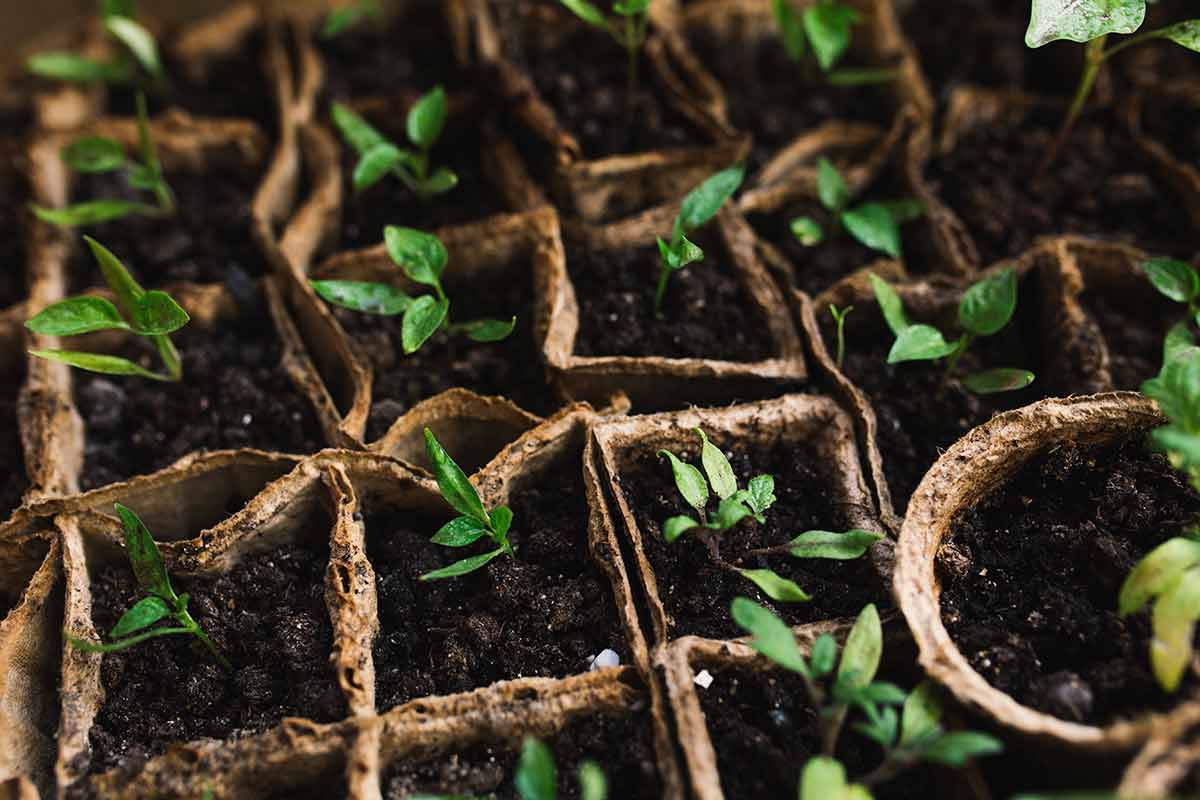
Can I grow herbs from seed?
If you’re a beginner, we suggest that you save yourself the struggle of growing plants from seeds until you have a few summers under your gardening tool belt. Instead, let someone else do the work and pick up a few pots of fresh starter herbs and rest easy knowing that you’re already halfway there.
What are the easiest herbs to grow?
If you’re determined to start from seeds, we hope you’re seriously patient—and that you had the foresight to start them in March. Okay, so you absolutely want to do it yourself? Cilantro, dill, and fennel are relatively easy to grow, even for beginners.
If you go the more popular route and buy ready-to-plant herbs, we still suggest sticking to the easier herbs your first summer. Basil, parsley, and cilantro are exceptionally easy to grow from established seedlings and don’t need a lot of attention. Chives (technically not an herb, but c’mon, that’s how so many of us use them) are also easy and have the perk of blooming in ornamental flowers. Rosemary and thyme need a little more care but are still pretty manageable for a beginner.
We’re including mint (that also means catmint or catnip), oregano, and lemon balm on this list with a caveat—these are rapidly spreading herbs and must be container grown if you don’t want a neighborhood-wide invasion. Even when planted in containers, you may still find it growing outside the confines of the pot.
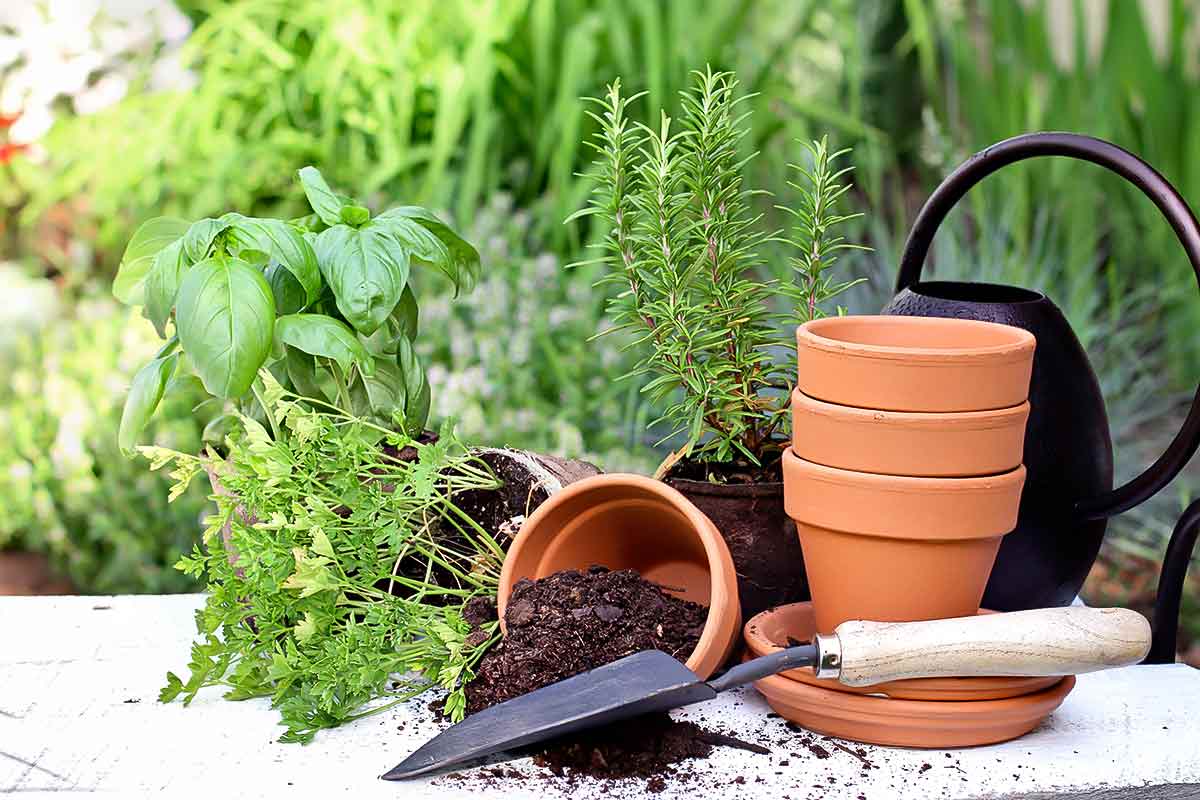
Which pots should I use for growing herbs?
Small plants should be transplanted to an 8- or 10-inch pot, which will give them enough room to grow. Smaller pots dry out too quickly and can cramp the roots, increasing the chances that your little greenies will be less than spectacular.
Whatever size pot you go with, make sure that it has adequate drainage and that you fill it with a suitable soil, not just a scoopful of dirt. Prebagged soil for small container plants has been specifically mixed for that purpose and isn’t expensive. Typically, it’s a mix of garden soil and peat moss. This combination ensures that it’s not too heavy, and it has good drainage while still retaining moisture and nutrients.
Larger pots are a terrific way to plant compatible herbs together, to grow anything with really deep roots, such as lemongrass, or to nurture a well-established and mature plant. When planting herbs together, the most important thing to remember is the care required for each herb. You want those that need similar amounts of sun and water together. One grouping that works well is a mixture of any Mediterranean herbs—sage, thyme, marjoram, oregano, and lavender—they all share a love of the sun and fairly arid conditions.
Keep in mind that chives will grow with nearly anything, whereas rosemary isn’t a great roommate for very many other plants.
How much sun do herbs need?
Most herbs do best with lots of sun—and by that we mean full sun for 8 hours a day. You may be able to get away with 4 hours of full sun a day, the minimum required. Aim for at least 6 hours a day. Indirect sunlight is alright for a few herbs, if that’s your sun situation. Chives, cilantro, parsley, mint, marjoram, chamomile, and tarragon can grow fairly well if they have bright, indirect sun for most of the day. Unfortunately, there aren’t many herbs that grow well in low light conditions.
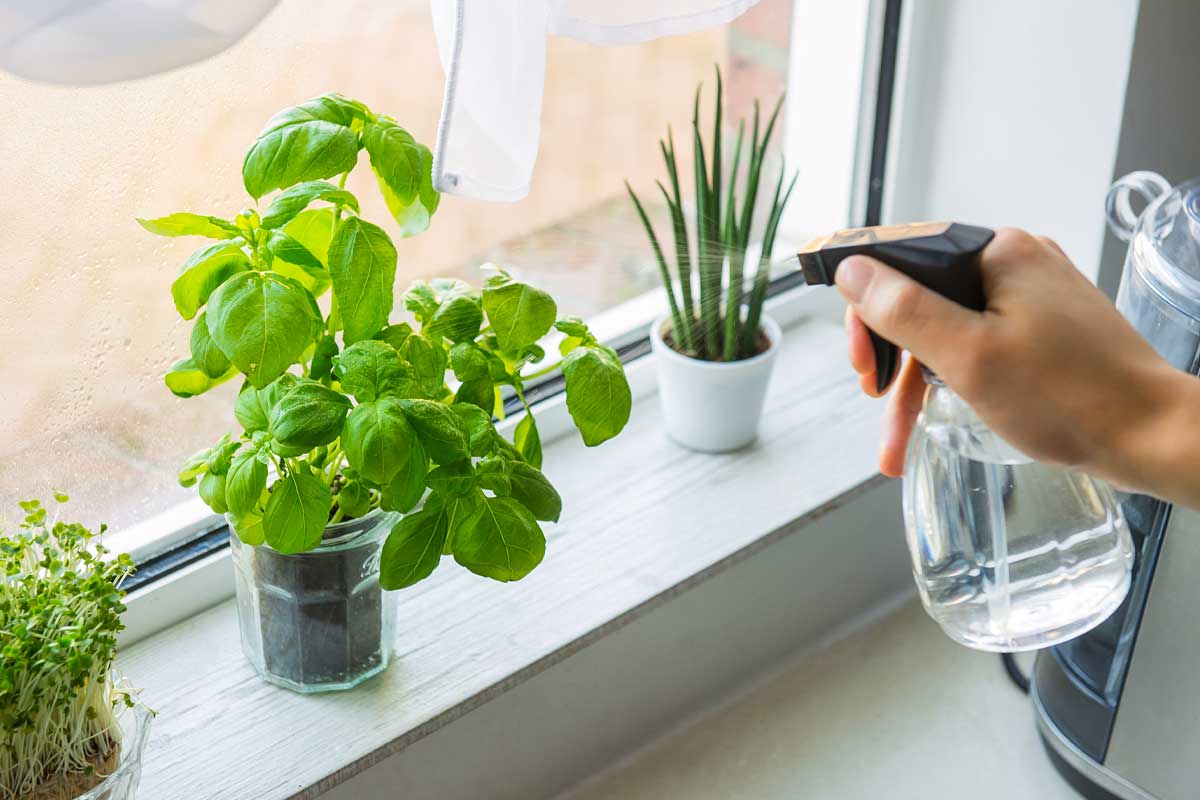
How much water do herbs need?
Thyme and sage prefer to be fairly dry, whereas basil and parsley both like to be consistently watered. In fact, they’ll communicate when they need water by getting a little droopy and then perk up quickly after a little shower. For the most part, container herbs have to be watered often (2 or 3 times a week), especially if they’re getting lots of sun. Stick your finger in the pot and, if it’s dry past the first inch, it’s time to get them wet. Water during the morning or evening hours to avoid evaporation and leaf scorch.
How to harvest herbs?
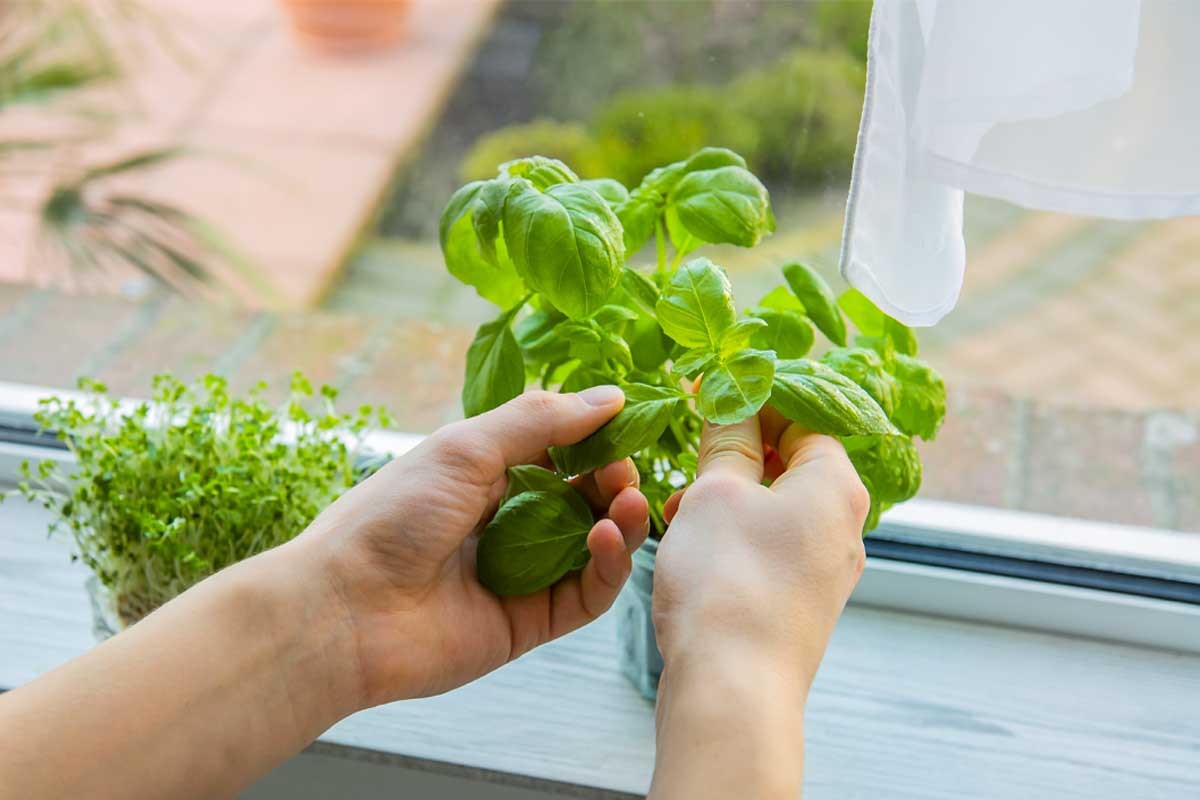
The point of growing herbs is to use them. Fortunately, most herbs will grow faster than you can use them (unless you’re just in it for the pesto, like some of us). This is especially true if you’re harvesting them in a way that encourages more growth.
The best way to harvest your herbs is to snip and pinch back consistently. This encourages the leaves to branch out, filling out and giving you more of the herb. It’s suggested that you always pinch off the newer growth and leave the larger, older leaves, sprigs, and stems. It seems like madness, we know, but the larger leaves are like solar panels that feed the new growth up top and help keep the plant balanced and full. And never trim more than 1/3 of your plant at a time, as that much missing foliage won’t leave it with much opportunity for new growth.
You can start trimming when the plant is about 4 inches above the soil, making sure that you’re leaving some good leaves behind. This will leave you with a sturdy base for your plant to continue growing. Pinch them back 3 or 4 inches for the first little while and you’ll find that your flavor jungle will grow out pretty quickly. The best place to pinch or snip herbs back is where 2 stalks form a v in the plant—by pinching off growth above that v, the plant will generally form even more new stalks in their place.
When should I let my herbs flower?
Aside from chives, you don’t want most container herbs to bloom. You should be doing enough pruning and pinching back that you won’t get a lot of flowers but just in case one appears, you’re going to want to get rid of it. Blooms take up a lot of the plant’s energy and the tasty, edible parts need all the energy they can get. Pinching off flower buds as you find them, keeps your herbs prioritized on flavor and not procreation. Basil and oregano, in particular, turn bitter when the plant has been allowed to flower. Once a plant flowers and goes to seed, its growth cycle is finished.
When do I fertilize my herbs?
Just like humans, container herbs can use a little help sometimes. Especially for plants growing in containers as they’re absorbing all the nutrients in the soil and you’re going to have to replace it. Fertilizer is the answer. There are a few ways to tell if you should be fertilizing, in particular you’re just not seeing any growth. If you’re feeling good about sun, water, and pruning but nothing’s happening, you might need to fertilize. Other signs are yellowing and dropping lower leaves, and a salty crust on the surface of the soil.
Any easy way to avoid fertilizer angst is to start with a good potting soil, preferably one with slow-release fertilizer so you don’t have to think about it over the summer. Otherwise, look for a good organic or a water-soluble fertilizer with the ratio of 20-20-20 to replace the nutrients that your growing greenies are taking from the soil. In simple terms, this fertilizer is for general use to encourage healthy growth and foliage with 20% each of nitrogen, phosphorus, and potassium. Apply every 4 weeks from April to October, or as long as your herbs are in active growth.
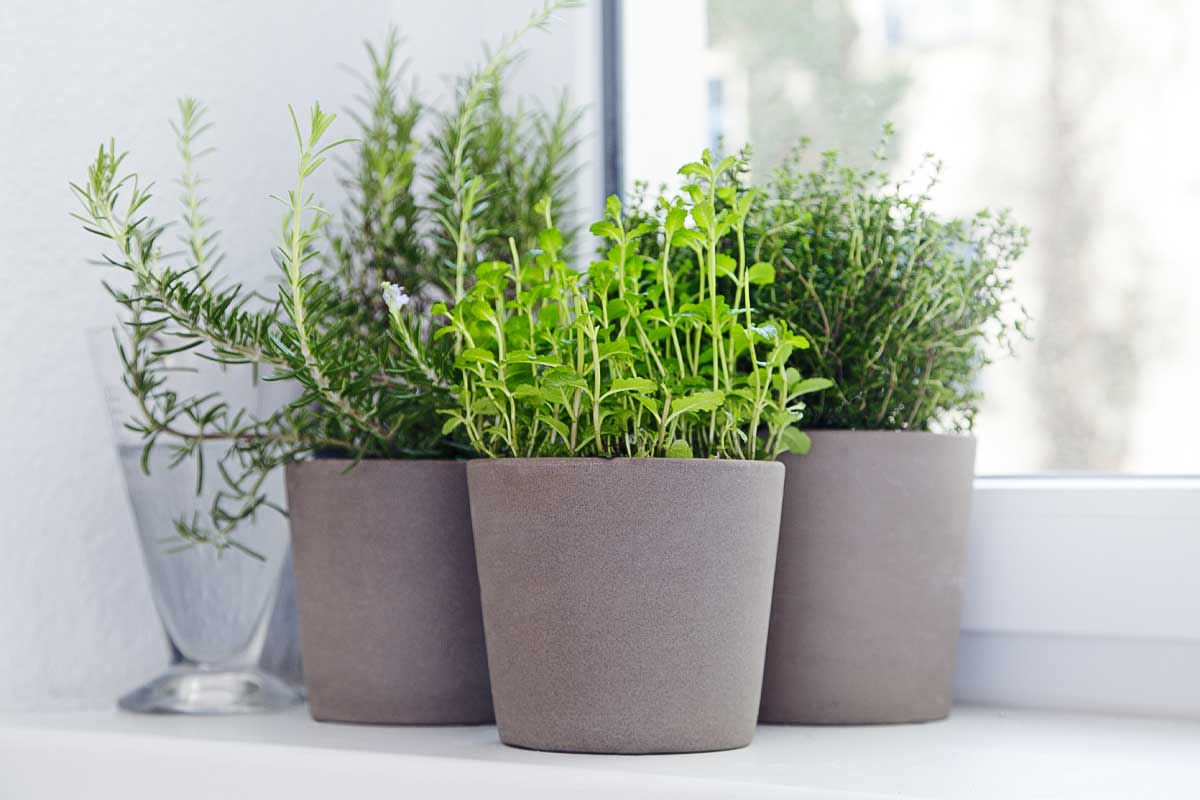
How to grow herbs indoors
It’s absolutely possible to grow herbs indoors with excellent results—and then that means you don’t have to walk so far for your garnishes. All the same rules apply, but you’ll have to put some thought into where they’re going to get that precious, golden sunlight. South facing (even south-west facing will do, in some locations) windows will give your plants most of the light they need throughout the summer months. A good UV plant lamp can be used as well, if you find one with a bulb for foliage in particular. You’ll still need to fertilize and water like you would any other plant.

